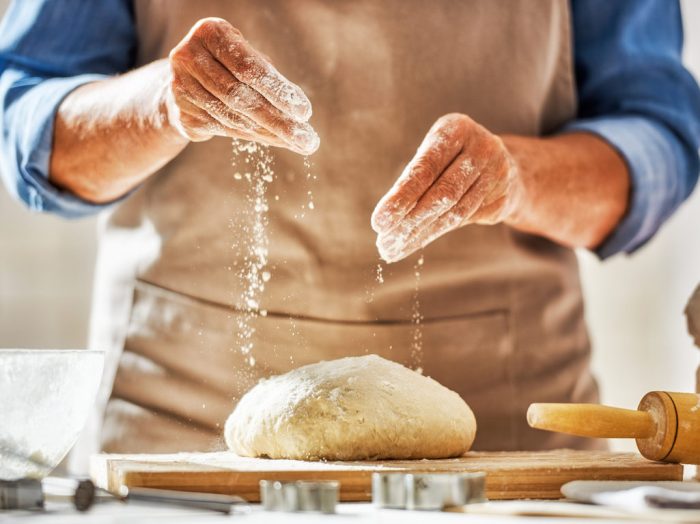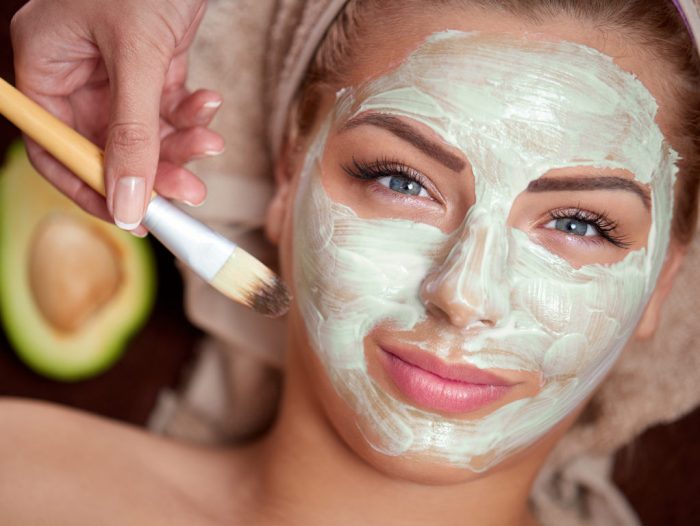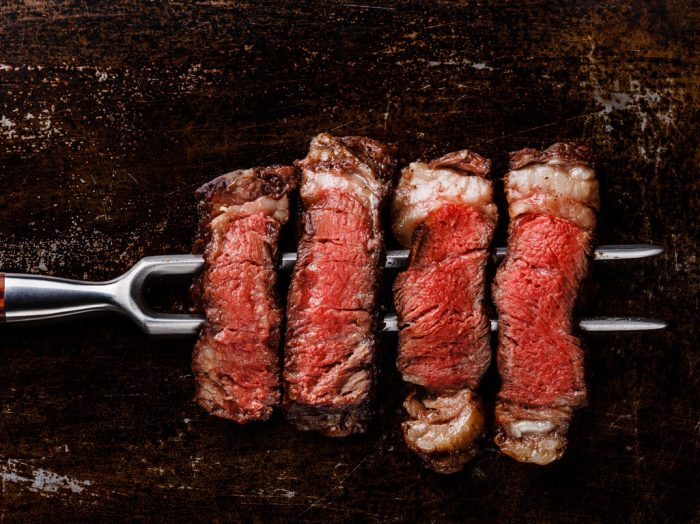For perfect baked goods, you need to know plenty about flour types. “I have all-purpose flour”, you’ll say! Yes, but that’s not enough if you have big plans, like baking homemade bread. There is also a flour that helps you bake goods quicker!
I admit that I don’t pay much attention to flour when baking. Usually, if my baked goods aren’t fluffy and nice, I blame the recipe. But I would have never thought that the flour I was using is not the one that the recipe required. When I’m shopping, I usually grab a pack of all-purpose flour and that’s it! That’s the only flour type I always have in my pantry. And the only one I use. But now I know that I was wrong and I’ve started researching the most popular flour types, to know them and to learn how to use them so that all my baked goods are success stories.
As a rule, flours with a low protein content generate less gluten, and flours with a high protein content generate more. Since gluten determines the structure and texture of a baked good, high protein flours rise more than the low protein ones.
6 flour types that you should learn how to use
1. All-purpose flour
Let’s start with all-purpose flour! Not because it’s the only one I’ve used until now, but because of all flour types, it’s the one you can use for almost anything. It is so-called because it’s said that you can use it for all purposes, but things aren’t that simple. Still, it’s the most versatile flour type, that’s why my baked goods still turned out OK, even if I hadn’t used the flour that the recipe called for (like cake flour or pastry flour).
I’m pretty sure most people use all-purpose flour when baking. It’s one of the most commonly used flour types, according to What’s Cooking America. If a recipe calls simply for ‘flour,’ it’s calling for all-purpose flour. Some call it ‘plain flour.’ It’s made from a mixture of soft and hard wheat and has a moderate protein content: 10 to 12 percent range.
You can find bleached or unbleached all-purpose flour, and the two types are interchangeable. Use it for pie crusts, fluffy biscuits, chewy breads, cookies, pancakes, and waffles.
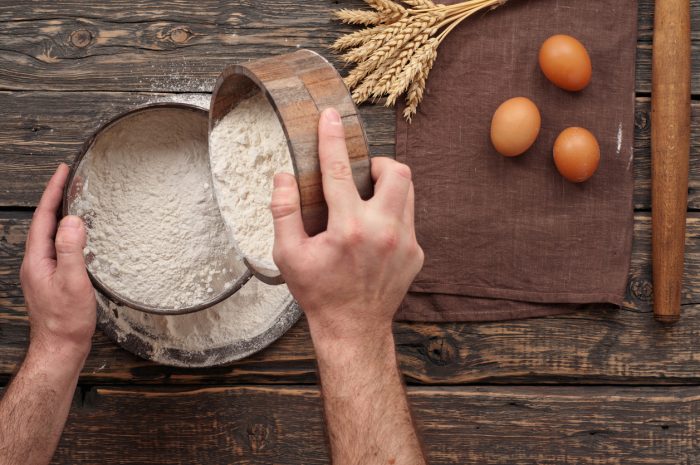
2. Bread flour
Bread flour is best for – you guessed it! – bread! Bread flour is made entirely from hard wheat. It has 12 to 14 percent protein and a larger quantity of gluten than all-purpose flour, and that helps the bread rise higher.
Use it when you make yeasted breads at home! You’ll get a better volume, chewier crumb, and a nice brown crust.
3. Cake flour
Cake flour is called like that for a reason: it’s best for cakes! It’s made from finely ground soft wheat, it’s bleached, and has a low protein content. Even if it has less protein, the bleaching process makes the flour slightly acidic. And that helps it rise your cake, improving its texture, and holding its shape, especially when you make baked goods with a high sugar ratio.
Use cake flour for baking tender and moist cakes. It’s also excellent for muffins and cookies.
4. Pastry flour
Pastry flour is made from soft wheat and has a low protein content. It’s similar to all-purpose and cake flours in terms of protein content and baking properties.
The lower quantity of gluten leads to a crumbly and tender dough. It’s a good option for pie crusts, breadsticks, pound cakes, biscuits, brownies, muffins, and cookies. Don’t use it for yeast breads.
If you don’t have pastry flour in your kitchen, you can make some by mixing a 2-to-1 ratio of all-purpose flour and cake flour.
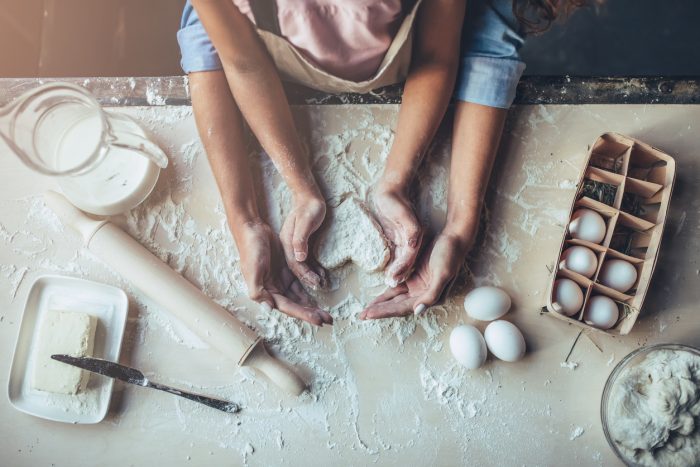
5. Self-rising flour
Self-rising flour is a blend of flour (usually the all-purpose type), baking powder, and salt. That’s why recipes that call for self-rising flour don’t call for salt or leavening agents. And, yes, that’s why it’s called ‘self-rising.’
If you’re in a hurry and you want to make some pancakes, that’s your best option when it comes to flour types. The reason is that you reduce your cooking time by eliminating whisking or sifting the dried ingredients. You can also use it for tender biscuits, muffins, pastries, and some cakes. You shouldn’t use it in yeast breads (because it is not a good idea to mix yeast with baking powder).
Self-rising flour is best stored tightly wrapped in its original box and used within six months of purchase. If not, the baking powder in it begins to lose its power.
6. Whole wheat flour
Whole wheat flour is also called graham flour. It’s made from the whole kernel of wheat, as opposed to white flour types, which only contain one of the three parts of the wheat seed. Whole wheat flour is coarser in texture, higher in dietary fiber and nutrients than other flours, but has less gluten, and more protein.
Because it’s more absorbent than white flour, you have to use more liquid when cooking with it. The dough will end up sticky. Use it if you want more nutritious but also heavier and denser baked goods.
You can also find which are the most frequent Cake Baking Mistakes You Should Avoid Even if You’re a Beginner.

